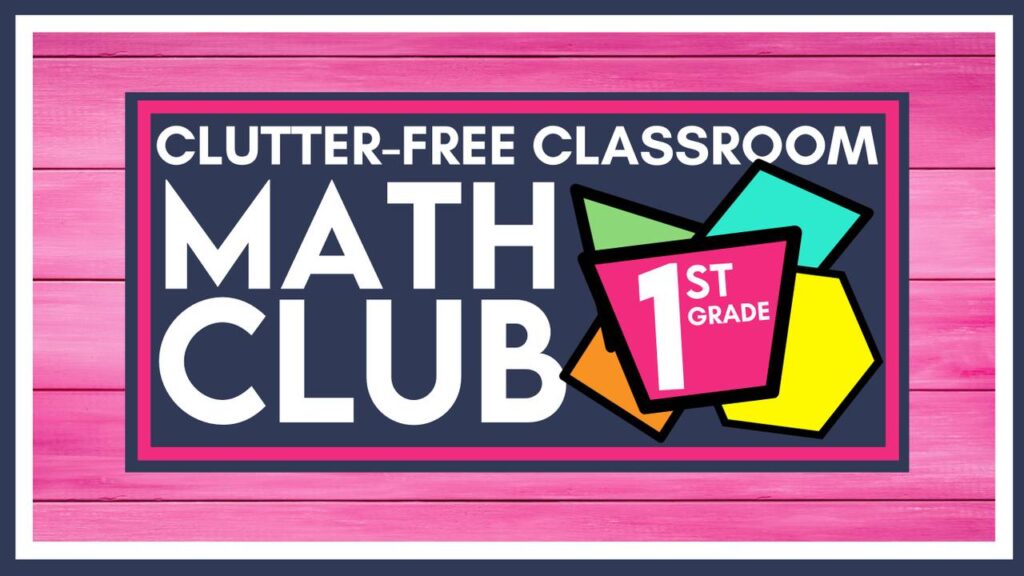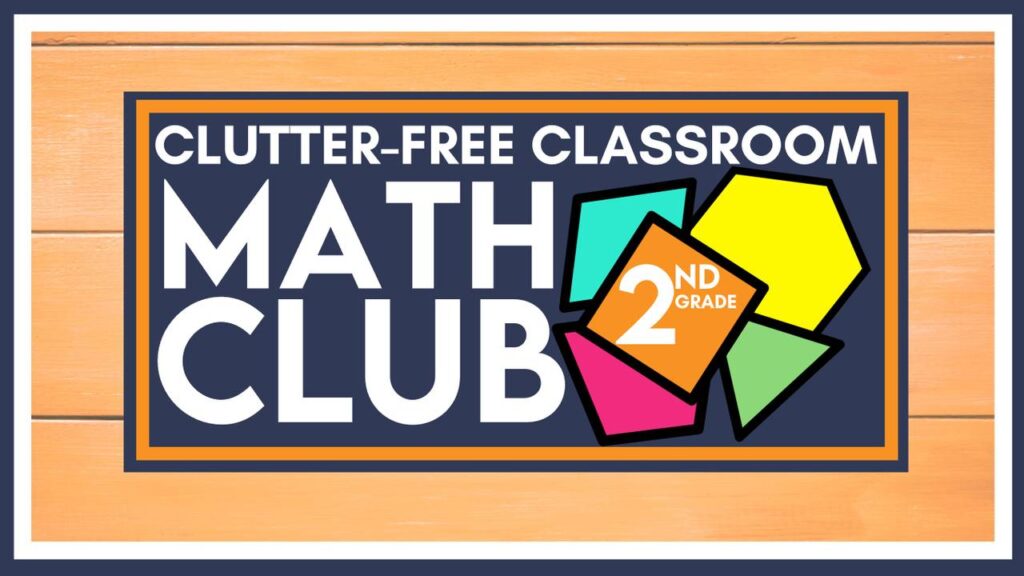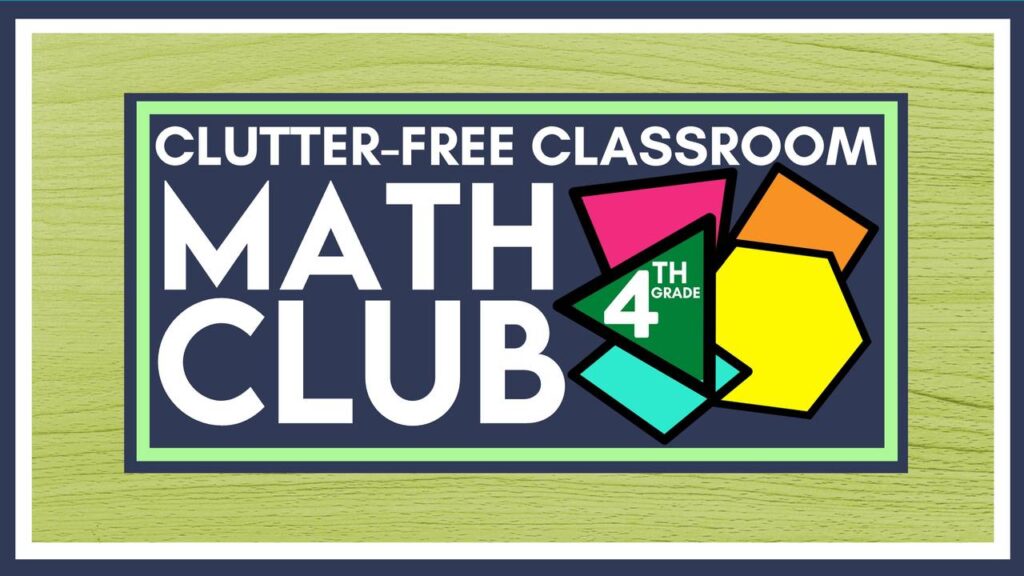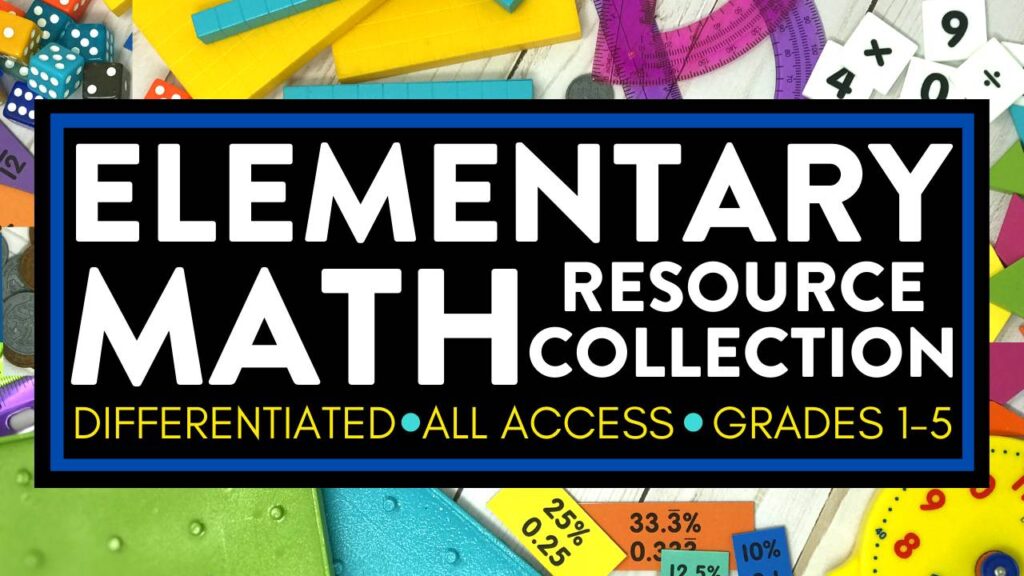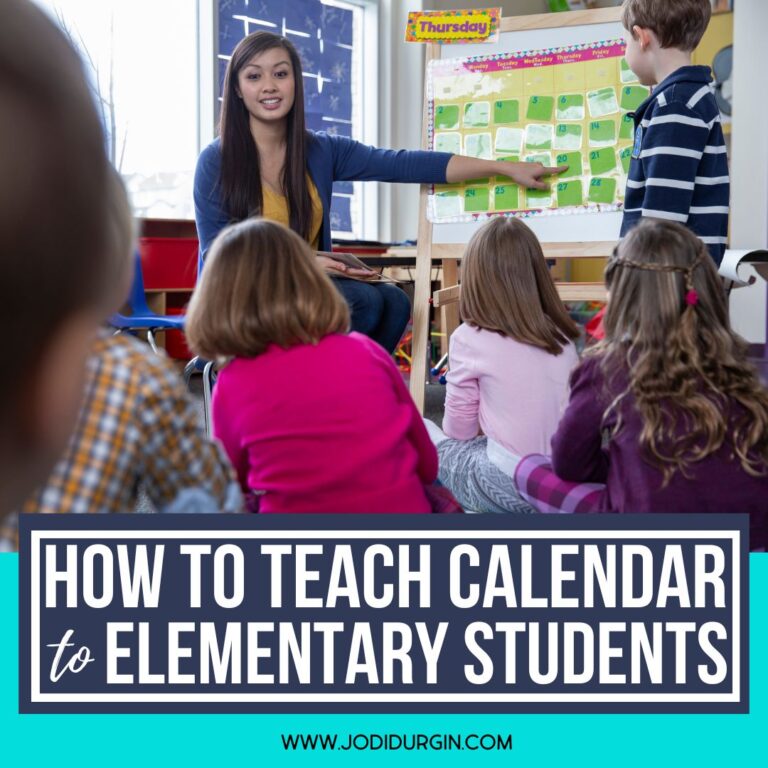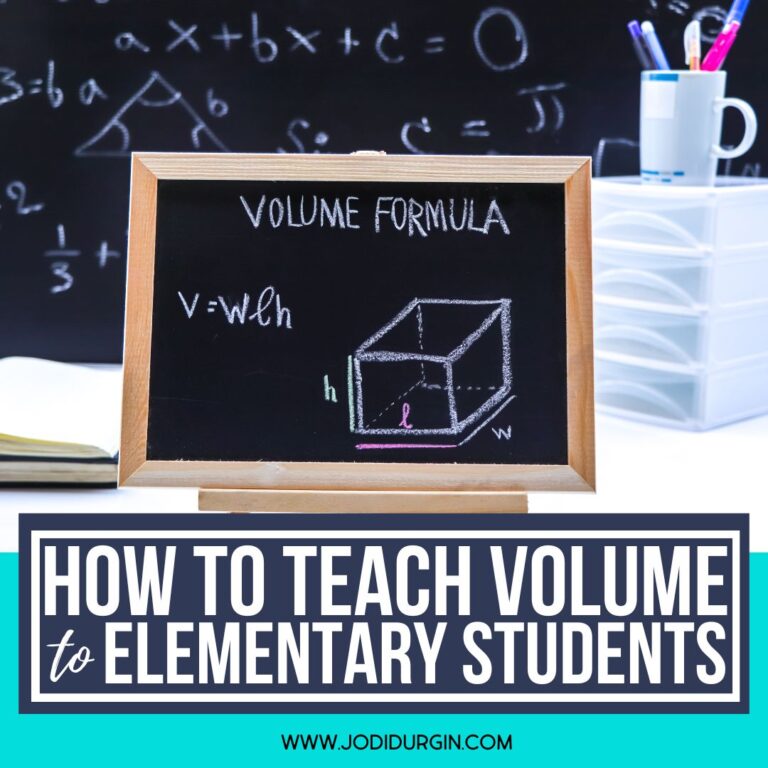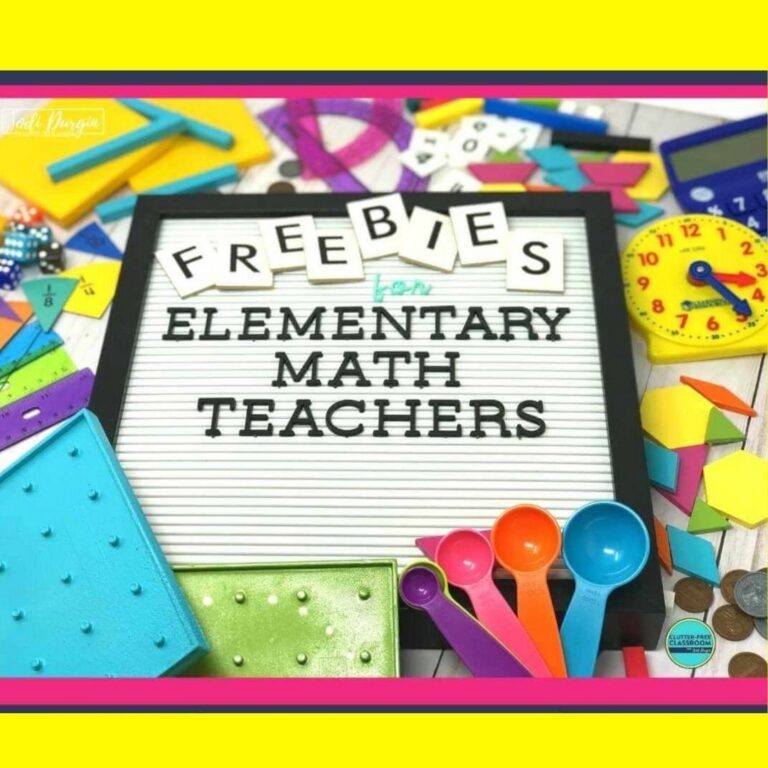If you are an elementary teacher looking for tips and ideas for how to teach financial literacy, then you found the right place! Learn what financial literacy is, why it’s important, what your students need to know, and get 5 helpful tips for teaching it in a fun and engaging way. Read all about teaching financial literacy below!
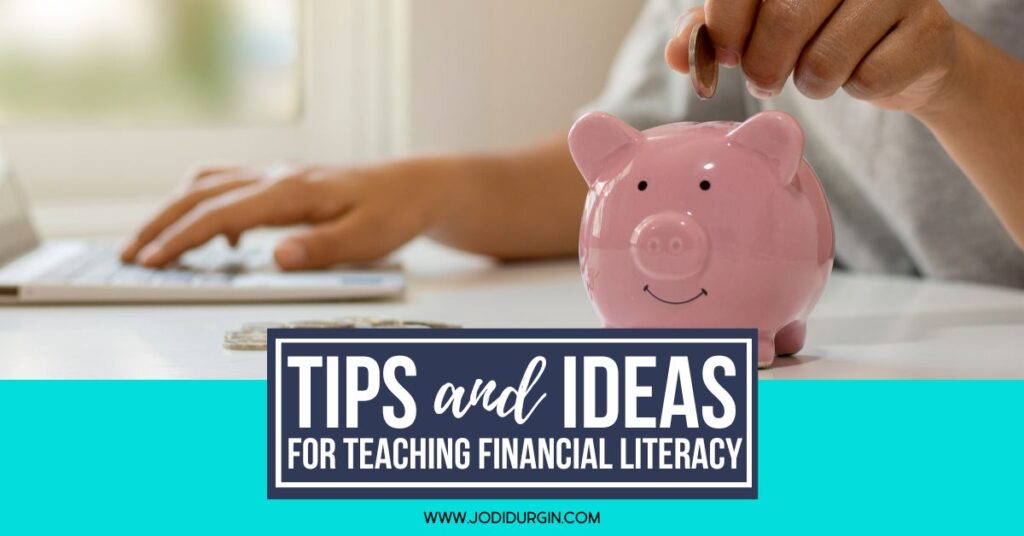
What is Financial Literacy?
Financial Literacy is developing the skills and strategies that promote personal and financial responsibility. For example, financial literacy helps us determine how much money we need to save to buy a new video game, the benefits and costs of lending money to our friends, and even how to properly price an item we built to sell to others. Introducing these skills early leads to a smart economic future for students.
Why is Financial Literacy Important?
It is important for students to learn financial literacy because it leads to smart financial planning and decisions in the future. Students will learn to develop specific goals and details needed in order to reach those goals.
What Financial Literacy Skills Do Students Need to Know?
Below are the TEKS that relate to financial literacy that define what students should be able to do by the end of the school year.
TEKS
1st Grade
- Define money earned as income; (1.9.A)
- Identify income as a means of obtaining goods and services, oftentimes making choices between wants and needs; (1.9.B)
- Distinguish between spending and saving; and (1.9.C)
- Consider charitable giving. (1.9.D)
2nd Grade
- calculate how money saved can accumulate into a larger amount over time; (2.11A)
- explain that saving is an alternative to spending; (2.11B)
- distinguish between a deposit and a withdrawal; (2.11C)
- identify examples of borrowing and distinguish between responsible and irresponsible borrowing; (2.11D)
- identify examples of lending and use concepts of benefits and costs to evaluate lending decisions; and (2.11E)
- differentiate between producers and consumers and calculate the cost to produce a simple item. (2.11F)
3rd Grade
- explain the connection between human capital/labor and income; (3.9A)
- describe the relationship between the availability or scarcity of resources and how that impacts cost; (3.9B)
- identify the costs and benefits of planned and unplanned spending decisions; (3.9C)
- explain that credit is used when wants or needs exceed the ability to pay and that it is the borrower’s responsibility to pay it back to the lender, usually with interest; (3.9D)
- list reasons to save and explain the benefit of a savings plan, including for college; (3.9E)
- Identify decisions involving income, spending, saving, credit, and charitable giving. (3.9F)
4th Grade
- distinguish between fixed and variable expenses; (4.10.A)
- calculate profit in a given situation; (4.10.B)
- compare the advantages and disadvantages of various savings options; (4.10.C)
- describe how to allocate a weekly allowance among spending; saving, including for college; and sharing; and (4.10.D)
- describe the basic purpose of financial institutions, including keeping money safe, borrowing money, and lending. (4.10.E)
5th Grade
- define income tax, payroll tax, sales tax, and property tax; (5.10.A)
- explain the difference between gross income and net income; (5.10.B)
- identify the advantages and disadvantages of different methods of payment, including check, credit card, debit card, and electronic payments; (5.10.C)
- develop a system for keeping and using financial records; (5.10.D)
- describe actions that might be taken to balance a budget when expenses exceed income; and (5.10.E)
- balance a simple budget. (5.10.F)
5 Tips for How to Teach Financial Literacy
Below are 5 helpful tips for teaching financial literacy to elementary students.
1. Read Aloud Picture Books that Teach Financial Literacy
Reading aloud picture books is a great way to integrate literacy into your math block and present information in a different way. Our favorite picture books for teaching financial literacy are Alexander, Who Used to Be Rich Last Sunday by Judith Viorst, The Berenstain Bears’ Dollars and Sense by Stan and Jan Berenstain and The Penny Pot by Stuart J. Murphy. Check out the full list of math picture books we recommend!
2. Offer Hands On Learning Experiences
Hands-on math experiences help students make connections, remember their learning, and develop a deep conceptual understanding of the content. You can make any lesson interactive and engaging by offering math manipulatives. Our favorite math manipulatives for teaching financial literacy are U.S. coins and bills and a cash register.
3. Explicitly Teach Related Math Vocabulary
Teaching math vocabulary is essential for all students, but it is especially beneficial for students who speak English as a second language and students with learning differences. Key vocabulary terms for financial literacy are choice, cost, decision making, goods, incentive, savings, services, wants, produce, human capital, charitable giving, bargain, budget, compare, give, investing, price, save, spend, benefits, costs, savings plan, balance, decimal point, expense, income, earnings, checks, dollar sign ($), manage, lending, availability, interest, consumer, producer, worth, barter, exchange, money, tools, labor, borrowing, scarcity, borrower, allowance, checking account, cent sign (¢), register, check stub, checking account, calculate, deposit, withdrawal, resources, credit, fixed expenses, variable expenses, profit, financial institutions, tax, payroll tax, sales tax, property tax, net income, credit card, debit card, electronic payments and financial records.
4. Give Students Opportunities to Apply Financial Literacy to the Real World
Learning becomes more meaningful when students understand how it connects to the real world. Students are more engaged and invested in their learning. Some examples of ways we use financial literacy in the real world are to save for a new toy, determine the amount of income we will need to go to the movie theater, or help us save to make a charitable donation to a local animal shelter. Project based learning and word problems are examples of opportunities for students to apply their learning to real world situations.
5. Encourage Parent Involvement
Parent participation in math is essential because it impacts students’ attitude toward math, proficiency levels this school year, and future success in their math education. Be sure to keep communication open with families and share ways they can support their children in their math learning. Some examples of ways they can practice financial literacy at home are working together to determine how much income needs to be saved to make a purchase for a new toy, have conversations about producers and consumers while running errands or discuss the benefits of saving for a vocational school or college.
In closing, we hope you found this information about how to teach financial literacy helpful!

